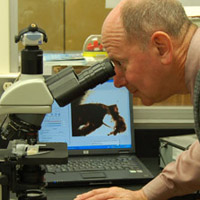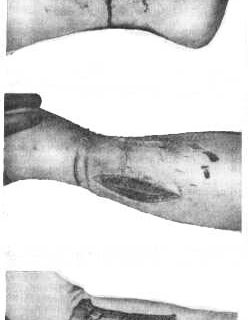As soon as not «call» Feochromocyth: She and «Great imitator», and «Impressionistic tumor», and «Decade-free tumor». What is a feuhromocytoma? What is the mechanism of its development? This is known by the author of this article.
Content
 Feochromocyt in medical circles figuratively called and «Great imitator», and «true pharmacological bomb», and «Impressionist tumor». What is hidden behind the term «Feochromocytoma»?
Feochromocyt in medical circles figuratively called and «Great imitator», and «true pharmacological bomb», and «Impressionist tumor». What is hidden behind the term «Feochromocytoma»?
Modern scientists do not know the true cause of this tumor. They have only assumptions that this ailment has a genetic nature. However, medicine has accumulated a lot of details about the feuhromocytoma. Let us list the main historical milestones of the knowledge of this disease:
- In 1886. The German pathologist Frankel first described the feuhromocyt, found in two adrenal glands at the 18-year-old girl, suddenly deceased from the collapse.
- In 1893. Manass reported a patient with a peochromocytoy and in 1896. demonstrated that such tumors acquire yellow-brown color when painting with chromium salts.
- In 1904. Marchetti described the adrenal peochromocytime, which can be considered hereditary, but the first documented case of hereditary feochromocytoma was described in 1943.
- In 1912. L. Peak suggested the term «Feochromocytoma» (from Grech. Phaios - dark color; Chroma - chromium salts; Cytoma - tumor).
- 1926. Roks (Switzerland) and C.H. Mayo (USA) successfully removed feochromocyt. Both patients had a hidden tumor with paroxysmal episodes of hypertension, which passed after surgery.
- 1952. An increase in the number of thyroid carcinoma associated with the feuhromocytaya is noted.
Prevalence of feochromocytoma
Feochromocytoma occurs in 1% of patients with constantly increased diastolic arterial pressure, being one of the causes of hypertension. In the population of feuhromocytomas are relatively rare, with frequency not exceeding 1: 200 thousand. per year, and the incidence is no more than 1 person by 2 million people.
The tumor may arise in persons of any age, but most often observed between 20 and 40 years. The prevalence of feochromocyt among adult men and women is the same, however, among the children there are more often in boys - in 60%. Multiple tumors in children are detected more often than in adults (respectively in 35 and 8% of cases).
Currently it is not possible to talk about the one hundred percent lifetime diagnosis of chromaffine tumors of adrenal glands. Often, feochromocytoma remains non-declared, in such cases there is a high risk of severe cardiovascular disorders, up to death. American researchers argue that, despite the perfection of diagnostic methods, approximately 1/3 patients with a diagnosis of feochromocytomas during life is not possible.
Mechanism of the development of feochromocytoma
The mechanism of the development of feuhromocytomas is due to the redundant flow in the blood of the so-called catecholamines - natural physiologically active substances called adrenaline and norepinephrine. In most cases, feochromocytoma allocates both types of catecholamines.
Some tumors produce only one of these catecholamines; Dopamine prevails very rarely.
In addition to catecholamines, pheochromocytoma can produce serotonin and other hormones.
Correspondences between the sizes of the tumor, the level of catecholamines in the blood and the clinical picture does not exist. Small tumors can produce and highlight a large number of catecholamines in blood, while large tumors metabolize catecholamines in their own tissue and allocate their part of them.
Another figurative name of feochromocytoma - «Decade-free tumor» - It is due to the fact that in 10% of observations it is malignant, 10% is localized outside the adrenal glands, in 10% - there is a bilateral defeat, 10% is combined with hereditary pathology and 10% is found in children.
In 90% of cases of feochromocytomas, there are adrenal brainstabs. Much less often tumors are localized outside the adrenal glands. Sporadic single mehromocytomas are more often localized in the right adrenal gland, while family-friendly forms are double-sided multicenter. With bilateral adrenal tumors, the probability of hereditary syndromes increases.
With a timely radical surgical treatment of feochromocytoma is fully cured. The effectiveness of the radical surgical treatment of feochromocytomas under the benignness of the tumor is high and is 95%. In cases of malignancy, five-year survival reaches 44%.
In the absence of complications of heavy hypertensive crises (ischemic heart disease and heart failure, brain circulation disorders, retinal detachment), occurring in advanced cases of the disease, the disability of patients after surgical treatment is fully preserved.









